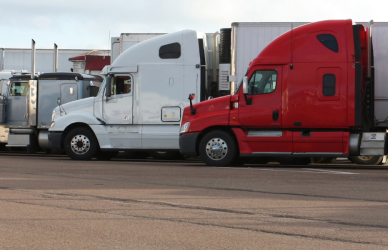The Federal Motor Carrier Safety Administration (FMCSA) has proposed a regulation concerning speed limiters for 2023. As the new year draws closer and the FMCSA’s plans become clearer, feedback to the proposed rule has grown in intensity. Speed limiters were featured as a top 10 issue in the yearly Top Industry Issues report, which is sponsored by the American Transportation Research Institute (ATRI). Many members of the truck driving community are shocked, concerned, angry, or even all three, over the proposed rule, as reported by Overdrive.
The trucking industry has questions on what speed will be mandated by the limiters. Many fleets, a total of 72.5%, already utilize speed limiters on their trucks and enjoy the freedom to select the speed themselves. There are three speed groups that the 72.5% of fleets fall into: 65 miles per hour or below, between 66 and 70 miles per hour, and above 70 miles per hour; these three speed groups are evenly split between the fleets that employ speed limiters.
Beyond fleets, some owner-operators and independent drivers feel as though they can complete their runs, adhering to both time and safety regulations, without speed limiters. For them, the issue of speed limiters took the fifth spot on ATRI’s Top Industry Issues report.
Owner-operators and independent drivers point to highway safety data which they feel encourages both greater education and more stringent regulations not for truck drivers, but for passenger traffic.
Despite owner-operators and independent drivers disagreeing with the proposal of speed limiters for truck drivers, it is hard to argue about the disparity over possible speeds for the limiters. It is clear that setting the limiters for 60 miles per hour is far different than setting them for 70 miles per hour. This disparity makes the question of what speed will be imposed even more pertinent. And there’s no indication of an answer from the FMCSA.
David Heller, Truckload Carriers Association (TCA) vice president of government affairs, tried to provide some insight at a webinar hosted on Oct. 20. He provided an overview of the regulatory environment and gave context for how a regulation might be introduced.
Heller, who addressed the crowd from near Washington, D.C., was able to provide context for the regulation. He first brought up President Joe Biden signing the Infrastructure Investment and Jobs Act into law which, along with the Trucking Action Plan, calls for more intense review of brokers.
Incumbent in the infrastructure bill is Biden’s National Roadway Safety Strategy (NRSS) which has “expectations of rulemaking” for automatic emergency braking systems. There was also mention of a Lane Departure Warning system, which according to language in the NRSS, “did have a strong flavor of speed throughout it.”
Heller predicts action on speed limiters soon, but he urged drivers to understand that the limiters will be far more advanced than past iterations.
“We can’t emphasize this enough,” he said. “This is a long way from the days of yesteryear when speed limiters were set it and forget it. Speed-limiter technology has come so far. … These are highly technical pieces of equipment that don’t just address interstate travel. They can address speeds in school zones or side streets.”
Heller encouraged the idea that limiters would allow for increased “flexibility for drivers,” providing the example that carriers would have the ability to “allow for extra speed for their drivers when they need it, if they need it.”
Heller acknowledged that the TCA is still “waiting to see how speed shakes out in the next phase of rulemaking.” And that might be awhile, as FMCSA Deputy Administrator Robin Hutcheson recently reported there were 15,000 responses to the public notice they filed on the limiters; the FMCSA has ensured that each one will be reviewed before a decision is made.
“I am betting it won’t be until fall 2023 until we hear something else on this issue,” Heller said, “whether it will be another supplementary notice or possibly a final rule from there on.”











